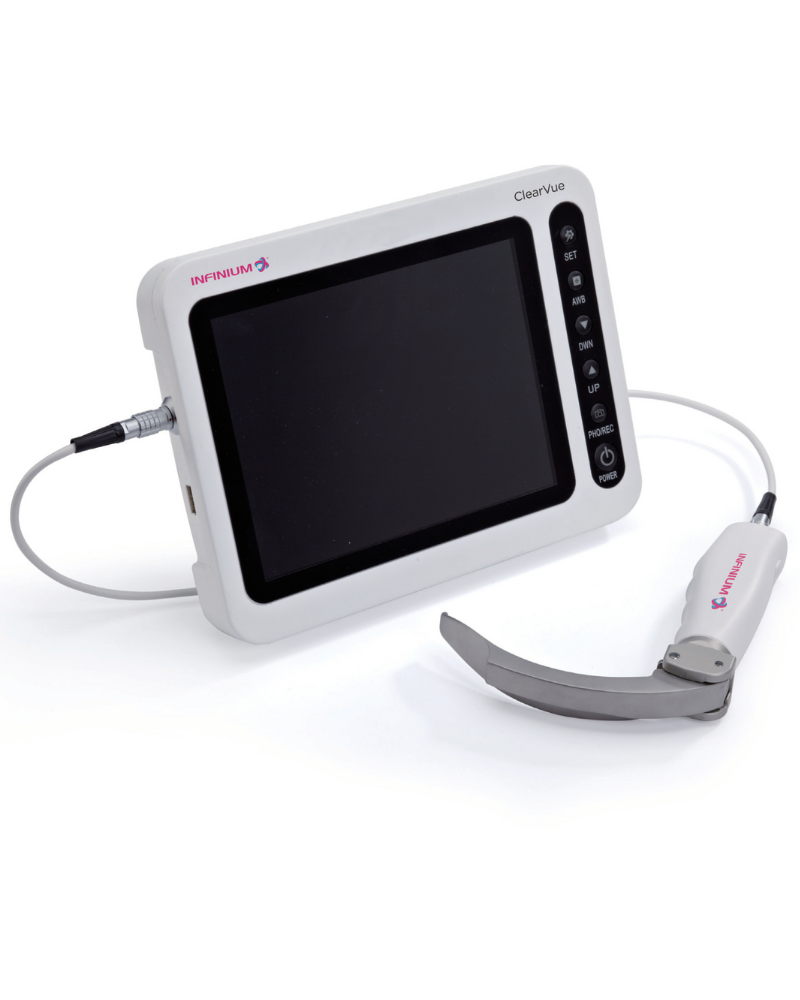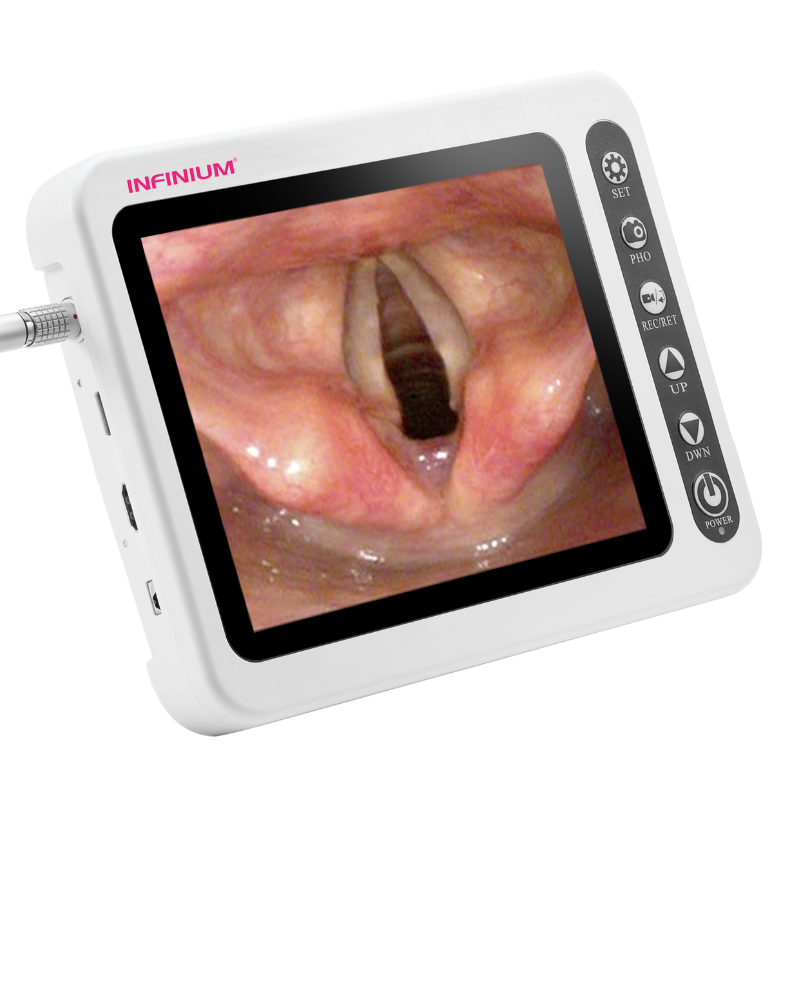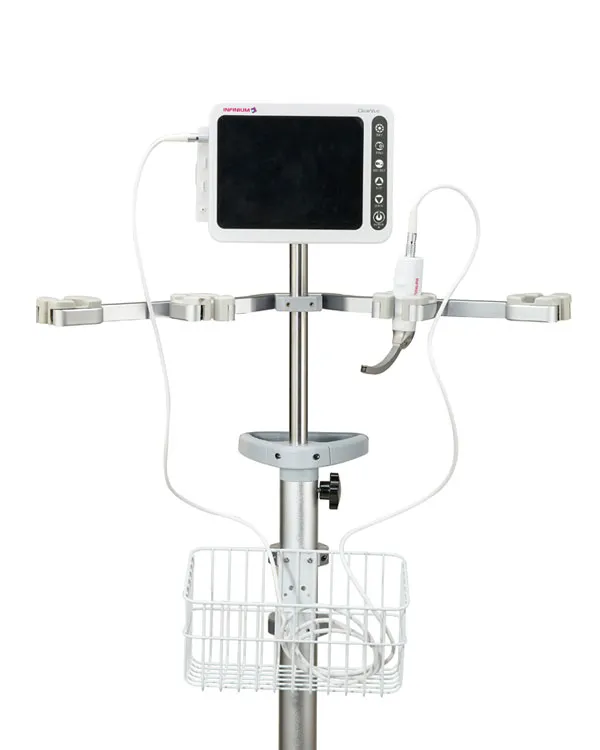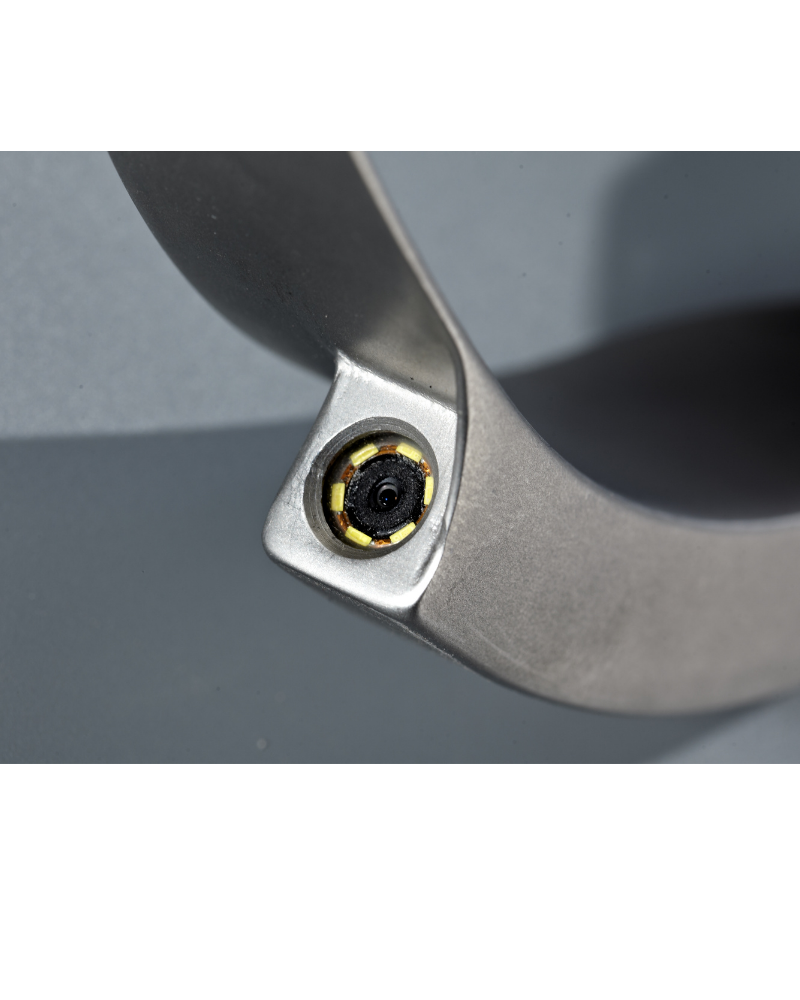Description
Description
Comprehensive HD Video Laryngoscope
The Infinium® ClearVue™ VLXL video laryngoscope adopts state-of-the-art image technology and possesses the advantage of a 2.0-megapixel full view camera with 8-inch high-resolution monitor. The ClearVue™ features a rechargeable li-ion battery for mobile use. The HD optics offer a unique anti-fog and high-resolution image. The overall design is compact and ergonomic. A high-resolution view of the glottis will enable the clinician’s first-attempt success while minimizing any chance of a complication during the intubation process.
ClearVue™ VLXL Features
-
- High Resolution 8 Inch Screen
- Rigid Steel Construction of Hand Pieces
- Quick installation and Removal of Blades
- Quick Shot Camera Button for Photo and Video Recording
- 4 GB Data Storage (Approx. 80 Minutes of Stored Video)
- Use on Battery or AC Power
- Optional ergonomic custom rolling stand
Complete Blade Offerings
Reusable Blade Model
- Macintosh Blades Size 1,2,3,4,5 Available
- Macintosh Curved “D” Blades Size 1,2,3,4,5 Available
- Miller Blades Size 0,1 available
- The ClearVue™ Comes standard with Macintosh Size 2,3, and 4 Blades
Durable
- 2 Years Warranty
- Screen Reinforced with Anti-Shatter Protection
- Light Weight
- Long Lasting Rechargeable Li-ion Battery
High-Definition
- 8 Inch HD Display
- Anti-Fog Optics Lens
- 2.0 Mega Pixel Camera With Video
Clinical Usage & Benefits
There are many reasons that may require intubation with an endotracheal tube, including surgery, anesthesia, trauma, or serious illness. Primary use cases include:
- Prior to surgery and anesthesia
- For foreign body removal
- Protect airway from bleeding or stomach content
- View airway abnormalities
- After surgery ventilation support
- Support difficulty in breathing
- When heavy sedation is required
- For higher oxygen concentration
Benefits of Video Laryngoscopes Vs Traditional
Better Viewing
The obvious key advantage of high-definition video laryngoscopes is being able to clearly visualize the patient’s airway in real-time in order for accurate tube placement. It creates much more convenient viewing options for both the primary caregiver and the medical team.
Increases First Attempt Success
Studies show that video laryngoscopy helps intubate patients on the first attempt more than traditional methods. This is especially true in critical care settings and during difficult intubation.
Lower Rates of Esophageal Intubation
One of the most common mistakes in intubation is to inadvertently place the endotracheal tube in the esophagus instead of the lower trachea. Video laryngoscopes are proven to reduce this common issue significantly making the overall successful procedure faster and less traumatic.
Reduces Airway Trauma
Using a video laryngoscope can reduce airway trauma by the reduced force that is required compared to a direct laryngoscope. This means less potential reflex reaction, tissue irritation and damage, bleeding, and reduced need for an induction agent.
Improved Training & Teamwork
With a screen that can be seen by others, team members can see the intubation in real-time and either provide assistance or use as real-time training. It’s also a faster signal to other clinicians and responders on the status and difficulty of the event providing a window into potential next steps.
Recorded Events Reduce Additional Procedures
Recorded events can reduce the number of additional exploratory procedures covering the same ground. Any previous damage to the recorded area can be viewed without a second exploration.
Easier to Use
Video laryngoscopes increase “successful” intubations in difficult intubation and when the care provider is less experienced. The training curve is faster than traditional methods while the video and lighting greatly reduce the most common mistakes. This means fewer bottlenecks and short average time for a successful intubation.
Addresses Immobility Issues
With a video laryngoscope, it is not necessary to align the airway axes. This allows intubation to happen in cases with limited head and neck mobility.
Pays for Itself
Considering the critical nature of failed intubations, it is easy to understand that a small reduction in failure rates can have a tremendous positive impact on subsequent health events and costs as well as saving additional lives. Video laryngoscopes pay for themselves by providing perceived and statistically proven improvements in these failure rates.
Specifications
Display
- Size: 8-inch full view
- Screen: LCD; LED scratch-resistant anti-glare screen
- Resolution: 1024 x 786
- Video Refresh Rate: 30FPS
Handle
- ABS material: Comfortable ergonomic short handle design
Video / Still Camera
- Resolution: 2.0 MP
- Field Angle: 66º
- Illumination: ≥800LUX
- Heated anti-fog camera feature
- One-click image capture
- 4G internal memory card
- USB connection to upload images and video
Battery
- Type: Rechargeable lithium-ion
- Max battery life: 2 hrs
- Voltage: 3.7V
- Capacity: 3200mAh
- Charging Time: 4 hrs
Power Adapter
- Input: 100-250V, 50/60Hz
Transport & Storage
- Temperature: -10ºc to +45ºc
- Humidity: ≤93º
- AP: 500hPa to 1060hPa
Working Conditions
- Temperature: +5ºc to +40ºc
- Humidity: 30º to 85º
- AP: 700hPa to 1060hPa











